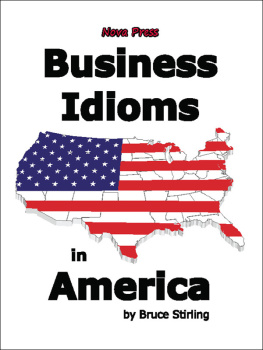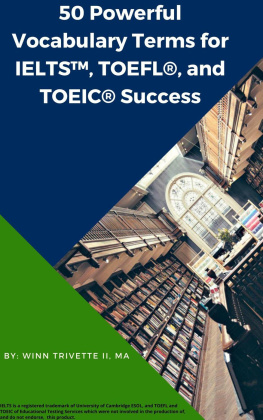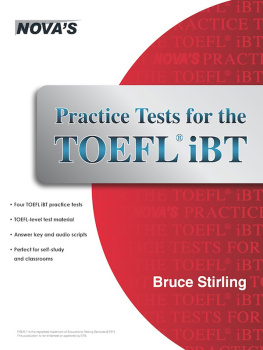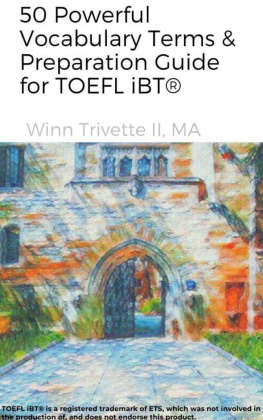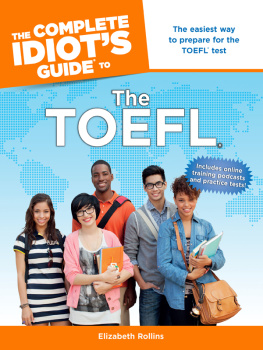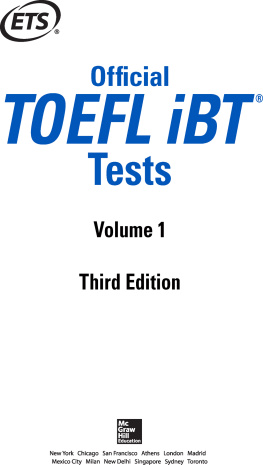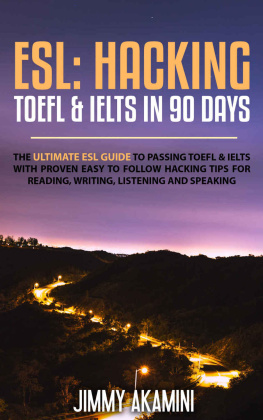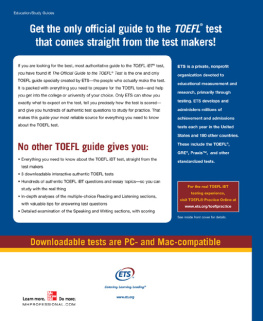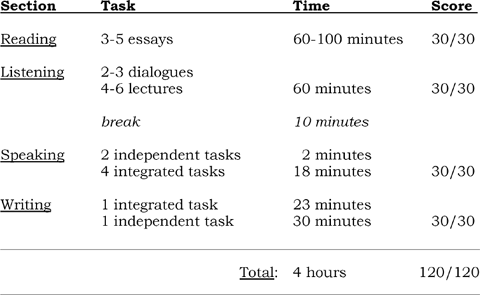The author would like to thank Gretchen Anderson, Lou-Ann Riccio, Jennie Farnell, Graciela Sauro, Ewa Jasinska, and Diana Bermudez for their comments and suggestions. The author would also like to thank Patricia Stirling, Bill Foster, Liz Foster, Ami Kothari, Gretchen Anderson, Ivo Draganac, and Jon Conine for contributing to the audio CD.
To the Test-Taker
At the start of each new semester, my TOEFL students always ask me, What is the trick to getting a high TOEFL iBT score? Unfortunately, there is no trick. However, there is a strategy that can help you increase your speaking and writing scores and thus increase your TOEFL iBT score. That strategy is called argument mapping. The idea behind argument mapping is simple: test-takers acquire speaking and writing strategies faster and more proficiently if they can visualize them. Knowing this, I designed the argument map for the TOEFL iBT.
What is an argument map? An argument map works just like a road map. A road map is a guide that uses lines and arrows to point you in the right direction so you wont get lost. An argument map does the same thing; however, instead of guiding you along highways and byways, an argument map will guide you through each speaking and writing task from start to finish. On the way, each argument map will tell you (depending on the task) what to say or write, where to say or write it, how to say or write it, and why. This, in turn, will maximize scoring. Because you are following a map, you will also save time and, more importantly, you will never get lost. Best of all, you can develop and deliver responses for all six speaking tasks and both writing tasks using the same argument map.
Mapping out verbal and written arguments, however, is only step one. Step two is knowing how . You will learn how to do that using a unique new argument analyzer in combination with user-friendly rating guides. By doing so, you can target those parts of your arguments that need revising when you practice. This will help you maximize scoring and make you test ready. Test ready means that on test day you will give the speaking and writing raters exactly what they are trained to look for: six coherent verbal arguments and two coherent written arguments.
Bruce Stirling
Developing an Argument
Arguments and the TOEFL iBT
The TOEFL arguments and two written arguments.
Why does English? Because at an English-speaking university, you will construct personal-opinion arguments, verbally and in writing (independent speaking tasks #1 and #2; independent writing task). You will also listen to and summarize lectures. Lectures are fact-based arguments (integrated writing task; integrated speaking task #4 and #6). You will also read and summarize fact-based arguments (integrated writing task; integrated speaking tasks #4 and #6).
As you can see, ETS uses arguments to test your ability to speak and write English academically. Therefore, to get high speaking and writing scores on the TOEFL iBT, you must know how to construct and summarize both personal-opinion and fact-based arguments, quickly and proficiently. You can do so using the strategy called mapping. Argument mapping begins with a review of basic argument development.
What is an Argument?
An argument is the process of presenting an . Lets start with the personal-opinion argument and deduction.
Personal-Opinion Argument: Deduction
Read the following dialogue.
Jane : Hi, Mary. How was California?
Mary : California was the best trip ever. I learned how to surf at Malibu. At first, I kept falling off, but I kept trying and soon I could do it. It was great. And the sights.


